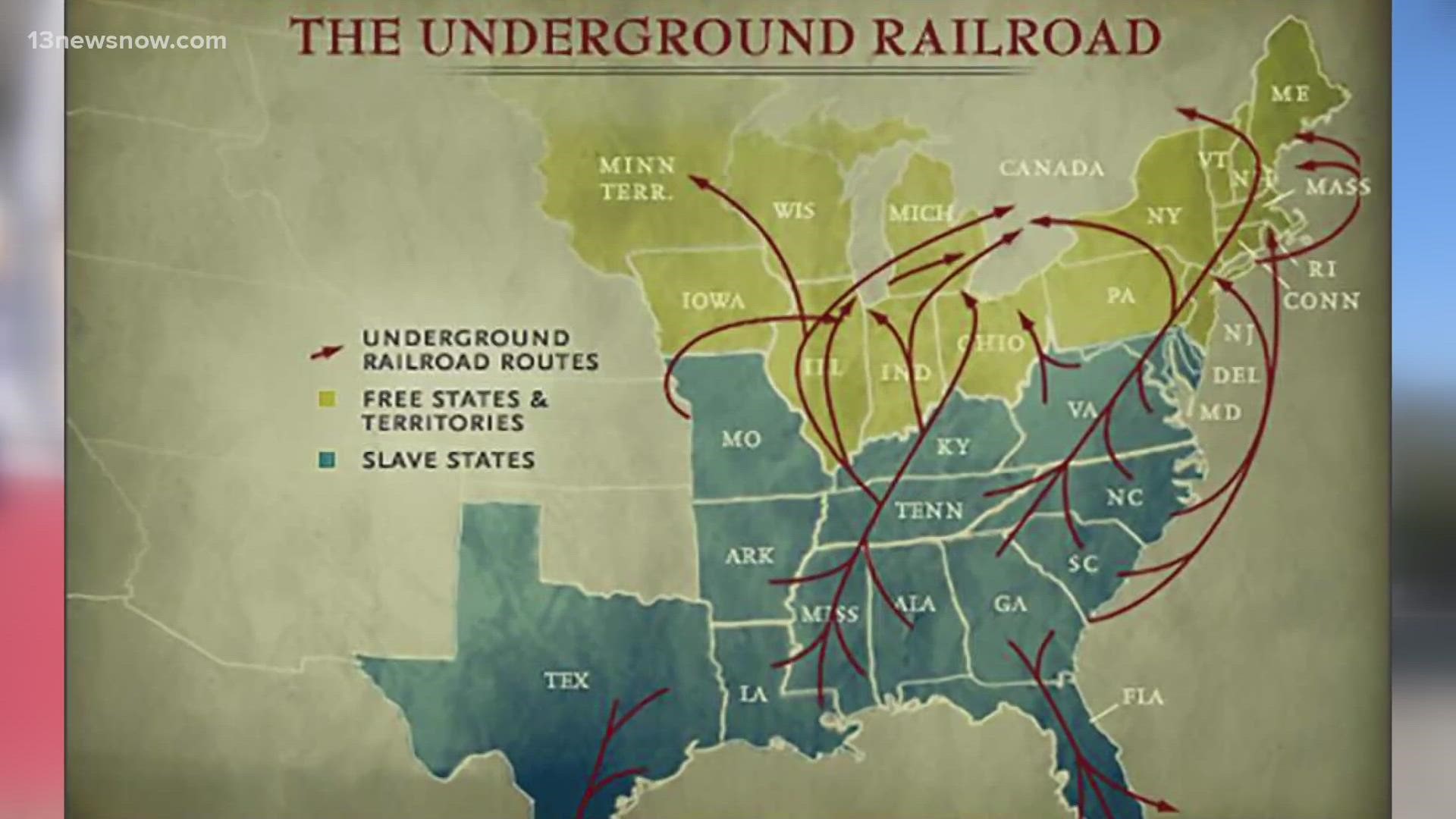PORTSMOUTH, Va. — Right at your feet is a story waiting to be told.
“In my reading, that’s where the slaves lived,” said Mae Breckenridge-Haywood with the African American Historical Society of Portsmouth.
Stories of enslaved men and women creating pathways to freedom in Olde Towne Portsmouth.
“They were clever enough to think of a way to get away from this bondage," she said. "That Underground Railroad is that tactic.”
Breckenridge-Haywood spent more than a year researching and fighting to get these stories on a national map: the American Civil War Trails. It's a map she said missed a big portion of history.
“I saw little about the Union soldiers," she said. "The Confederates didn’t fight the Confederates. It was a war, a Civil War, between the Confederates and the Union soldiers.”
Through research about Union soldiers in Portsmouth, she uncovered stories of enslaved people seeking freedom. Those stories are now shared through Portsmouth’s Underground Railroad Tour. Places like 300 North Street, a frequent hiding place for freedom seekers. Just a few steps away is the story of Clarissa Davis dating back to 1854.
“She and her brothers tried to escape," Breckenridge-Haywood said. "They got on the ship, the City of Richmond, she did not.”
Breckenridge-Haywood said Davis hid in a crawl space at 316 North Street until she could finally reunite with her brothers in New Bedford, Massachusetts. Another safe space is the Emanuel AME Church which was a hub to share information.
“Sometimes they would speak over a big tub so that their plans or voices could not be heard from other people that might be within hearing distance,” she said.
While some buildings stand, other significant locations are left with just a sign like the Crawford House Hotel. Breckenridge-Haywood said that’s where Eliza Baines, an enslaved woman, worked.
There she learned what ships traveled north that would provide passage to freedom.
“She would hear when the ship was coming in, hear information that would be very important,” Breckenridge-Haywood said.
Other stops on the self-guided tour include High Street Landing, the Macon House, and Glasgow Street Park.
High Street Landing became a busy port after the first enslaved Africans were docked in Hampton. Enslaved people used the harbor to stow away on certain ships headed north.
The Macon House, which sits at the corner of Middle and North Streets, was a clear view of the harbor making it a prime escape path. The city's original Emanuel AME Church stood at Glasgow Street Park before it burned down in 1856. The plan to escape is only part of the story.
“They were able to get to a better place up north... make contributions to life and living for, especially them, but for the world,” she said.
Breckenridge-Haywood hopes this tour of seven Portsmouth locations will inspire others to uncover another path in history.
“We have to play catch up and that’s all right but I think it’s important that we know our history,” she said.

